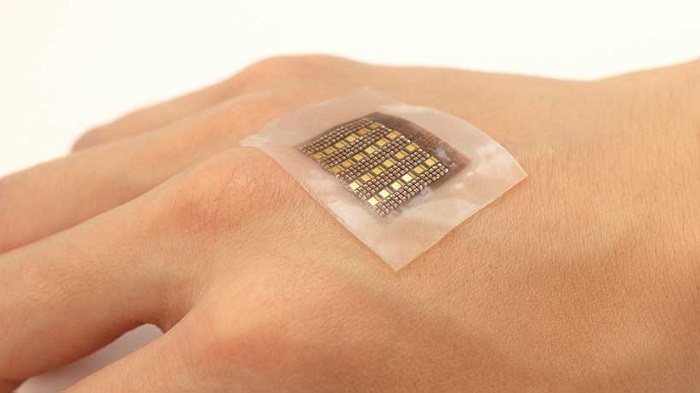University of California San Diego (UCSD) researchers developed an electronic patch that can monitor biomolecules in deep tissues.
The technology can monitor hemoglobin, providing medical professionals with access to crucial information for spotting life-threatening conditions. This includes malignant tumors, organ dysfunction, cerebral or gut hemorrhages and more.
“The amount and location of hemoglobin in the body provide critical information about blood perfusion or accumulation in specific locations,” said Sheng Xu, professor of nanoengineering at UC San Diego and corresponding author of the study. “Our device shows great potential in close monitoring of high-risk groups, enabling timely interventions at urgent moments.”
MRI and X-ray methods to provide information on such conditions can be bulky and hard to procure, the UCSD researchers say. They also only provide information on the immediate status of the molecule. These methods fail to offer long-term biomolecule monitoring capabilities.
The sensor overcomes these limitations, the UCSD researchers say. “Continuous monitoring is critical for timely interventions to prevent life-threatening conditions from worsening quickly,” said study co-author Xiangjun Chen, a nanoengineering Ph.D. student in the Xu group. “Wearable devices based on electrochemistry for biomolecules detection, not limited to hemoglobin, are good candidates for long-term wearable monitoring applications. However, the existing technologies only achieve the ability of skin-surface detection.”
The flexible, low form-factor, wearable patch comfortably attaches to the skin, according to UCSD. It can perform three-dimensional mapping of hemoglobin with a submillimeter spatial resolution in deep tissues. This extends down to centimeters below the skin, while other wearable electrochemical devices only sense biomolecules on the skin surface.
Additionally, it can achieve high contrast to other tissues. Optical selectivity allows the sensor to expand the range of detectable molecules. It does so by integrating different laser diodes with different wavelengths, along with potential clinical applications.
The UCSD patch features arrays of laser diodes and piezoelectric transducers in its soft silicone polymer matrix. The diodes emit pulsed lasers into the tissues. Biomolecules in the tissue absorb the optical energy and radiate acoustic waves into surrounding media.
The researchers plan to develop the device in a number of ways, including shrinking the backend controlling system. This could create a portable device for laser diode driving and data acquisition. They also plan to explore the wearable’s potential for core temperature monitoring.


















